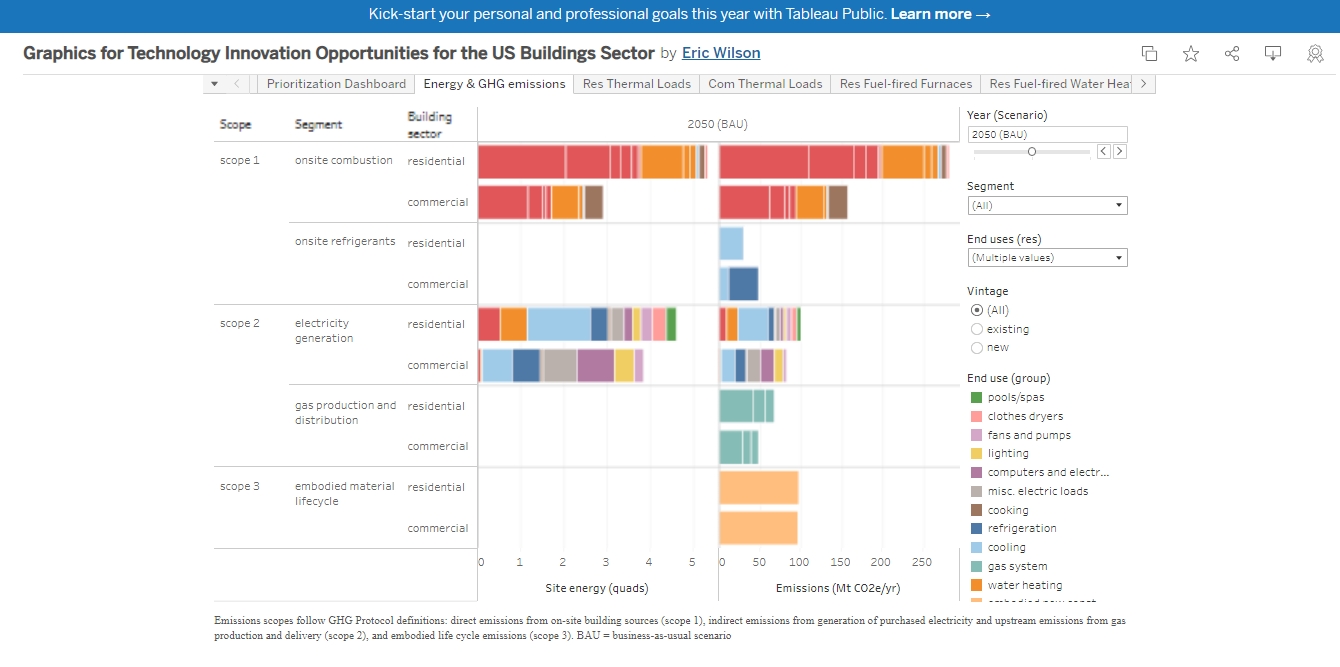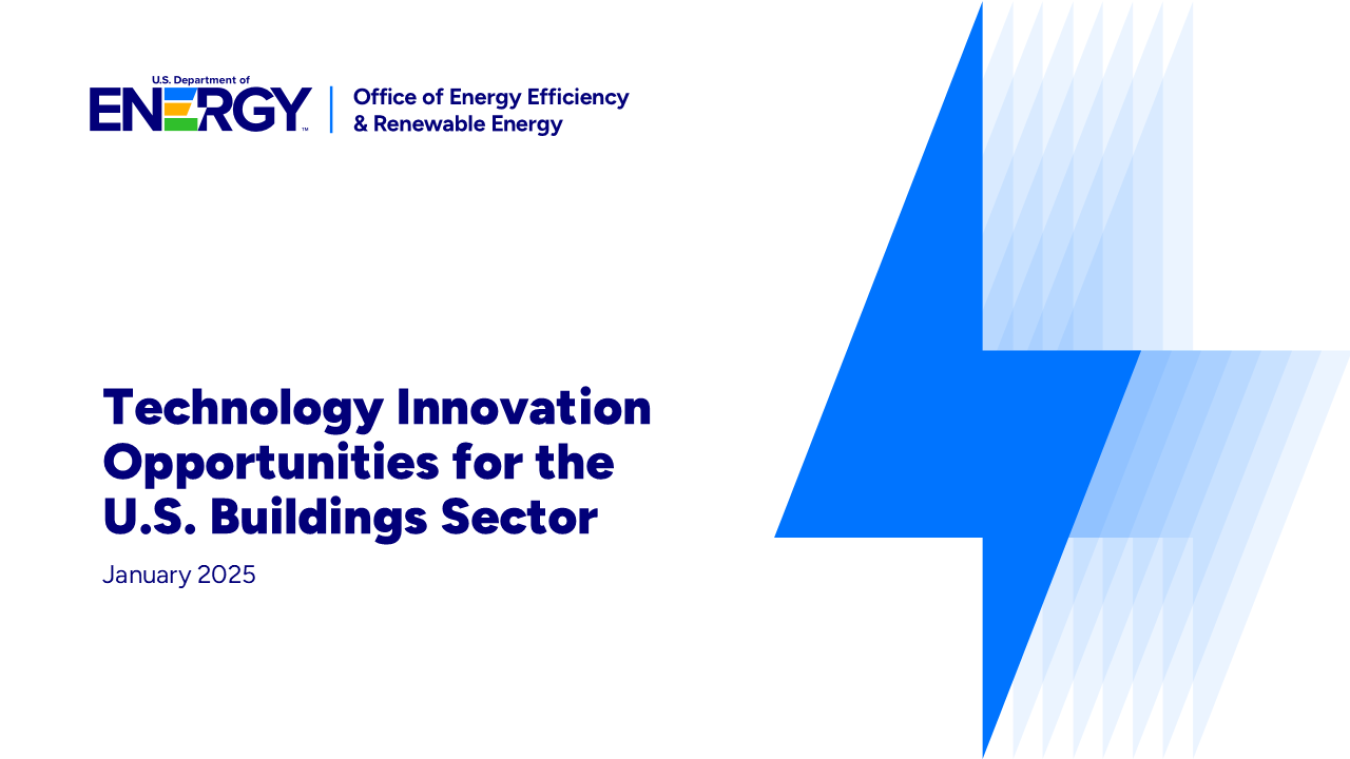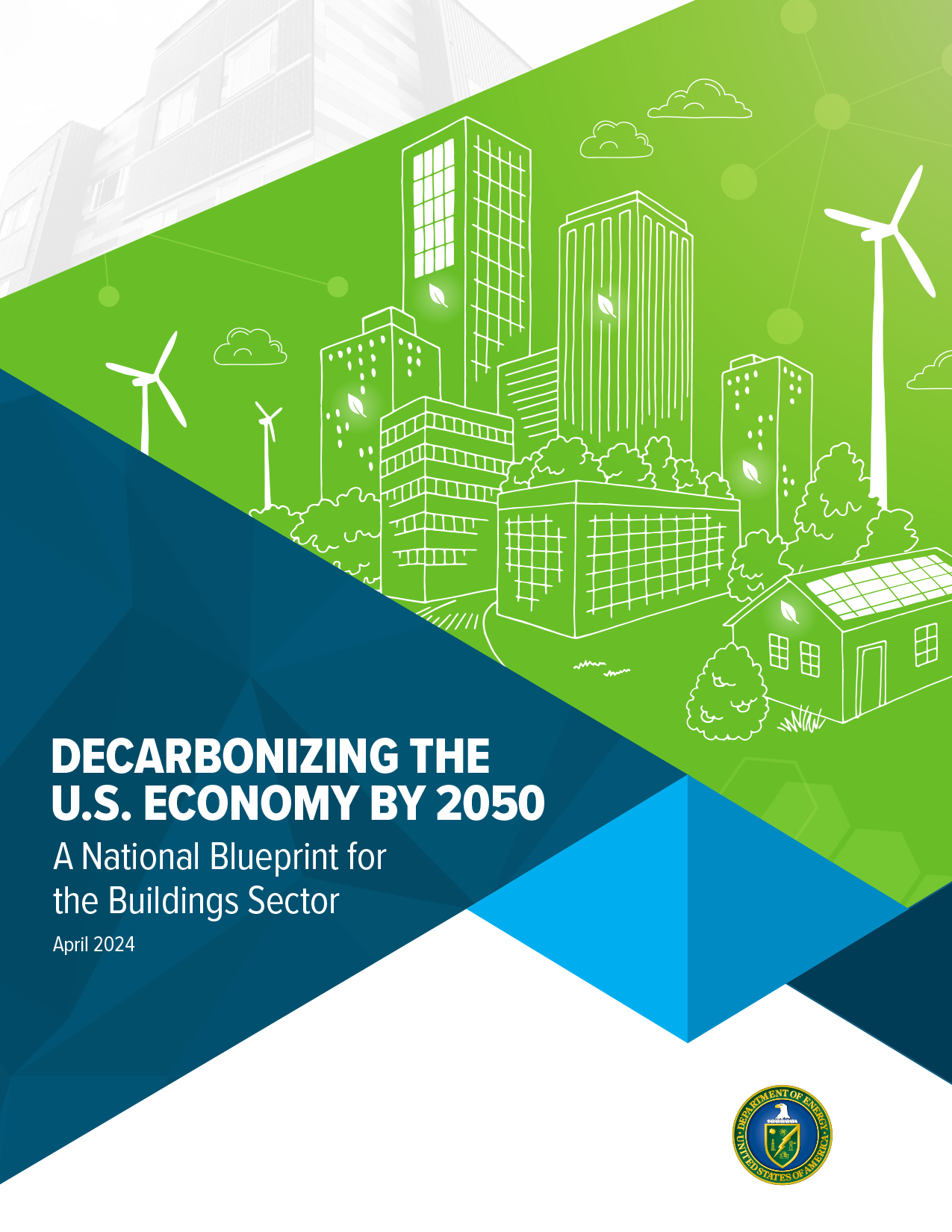Commercial and public companies operating in buildings account for 75% of U.S. gross domestic product. Further, buildings consume 75% of the electricity and 40% of the total energy used in the United States. As such, buildings play a pivotal role in achieving the country's economic and energy sector goals.
The Building Technologies Office (BTO) within the U.S. Department of Energy (DOE) is committed to generating and sharing high-quality, accessible data and analysis that can lead to breakthroughs in building technology innovation and adoption, as well as a more resilient, healthy, and economically robust future.
DOE leads the building of energy models used by builders, architects, technology developers, and researchers across the country, including ResStock and ComStock which, respectively, model the U.S. housing and commercial buildings stock.
DOE developed the following data-driven analyses and tools for organizations to use to inform and validate decision making within the residential and commercial building sectors.
Technology Opportunities Dashboard

The Buildings Technology Innovation Opportunities Dashboard is an interactive tool that maps current and future sources of U.S. building energy use, energy costs, and greenhouse gas emissions with a high degree of detail. The national mapping supports regional breakouts as well as further resolution of results by building type, building vintage, and technology type.
The data sets a common foundation for assessing the most important buildings sector segments on which to focus efforts.
Technology Innovation Opportunities for the U.S. Buildings Sector

The Technology Innovation Opportunities for the U.S. Buildings Sector analysis leverages the dashboard data to synthesize key technical solutions and implementation barriers for 25 high-priority segments of building energy end uses. The analysis also identifies six opportunities for buildings sector innovation that cut across multiple segments. Specific federal actions are identified that hold the most promise to save energy, improve resilience, lower upfront and operational costs, reduce pollution, and improve health outcomes.
Download the analysis as slides or as an accessible report (coming soon).
National Blueprint for the U.S. Buildings Sector

DOE led the development of a national, multi-agency collaboration for the buildings sector focused on delivering cost savings, health, and resiliency benefits while reducing emissions.
The data-driven strategy in Decarbonizing the U.S. Economyby 2050: A National Blueprint for the Buildings Sector highlights gaps in innovation where research and development are needed and includes actions the federal government can take to meet specific targets.

